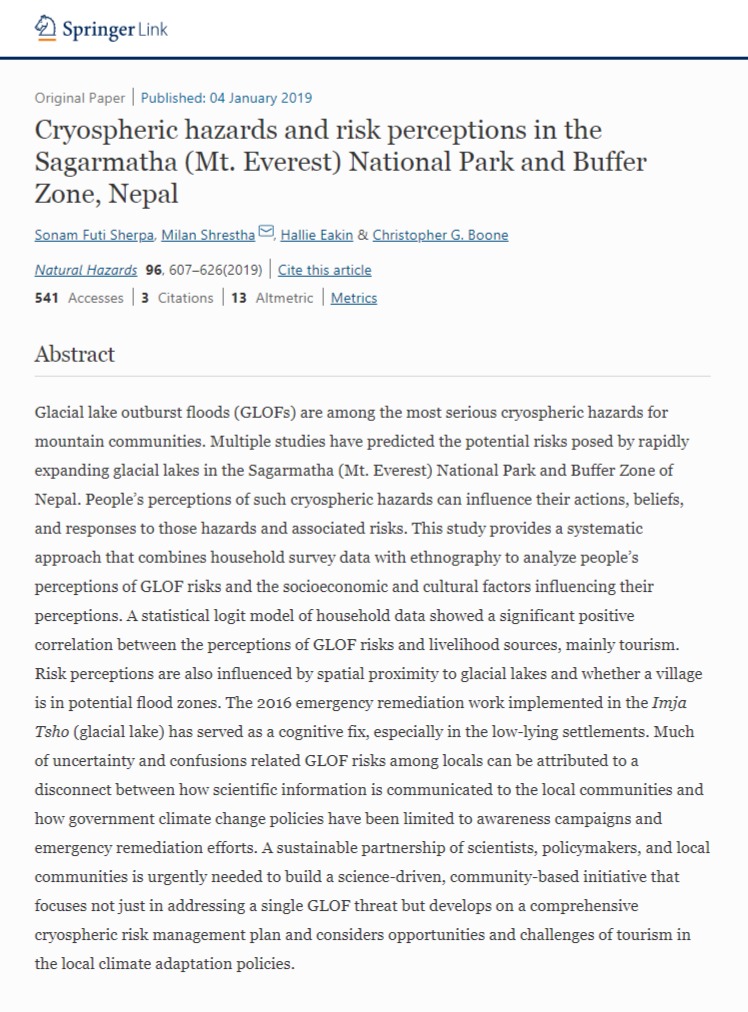
Glacial lake outburst floods (GLOFs) are among the most serious cryospheric hazards for mountain communities. Multiple studies have predicted the potential risks posed by rapidly expanding glacial lakes in the Sagarmatha (Mt. Everest) National Park and Buffer Zone of Nepal. People’s perceptions of such cryospheric hazards can influence their actions, beliefs, and responses to those hazards and associated risks. This study provides a systematic approach that combines household survey data with ethnography to analyze people’s perceptions of GLOF risks and the socioeconomic and cultural factors influencing their perceptions. A statistical logit model of household data showed a significant positive correlation between the perceptions of GLOF risks and livelihood sources, mainly tourism. Risk perceptions are also influenced by spatial proximity to glacial lakes and whether a village is in potential flood zones. The 2016 emergency remediation work implemented in the Imja Tsho (glacial lake) has served as a cognitive fix, especially in the low-lying settlements. Much of uncertainty and confusions related GLOF risks among locals can be attributed to a disconnect between how scientific information is communicated to the local communities and how government climate change policies have been limited to awareness campaigns and emergency remediation efforts. A sustainable partnership of scientists, policymakers, and local communities is urgently needed to build a science-driven, community-based initiative that focuses not just in addressing a single GLOF threat but develops on a comprehensive cryospheric risk management plan and considers opportunities and challenges of tourism in the local climate adaptation policies.